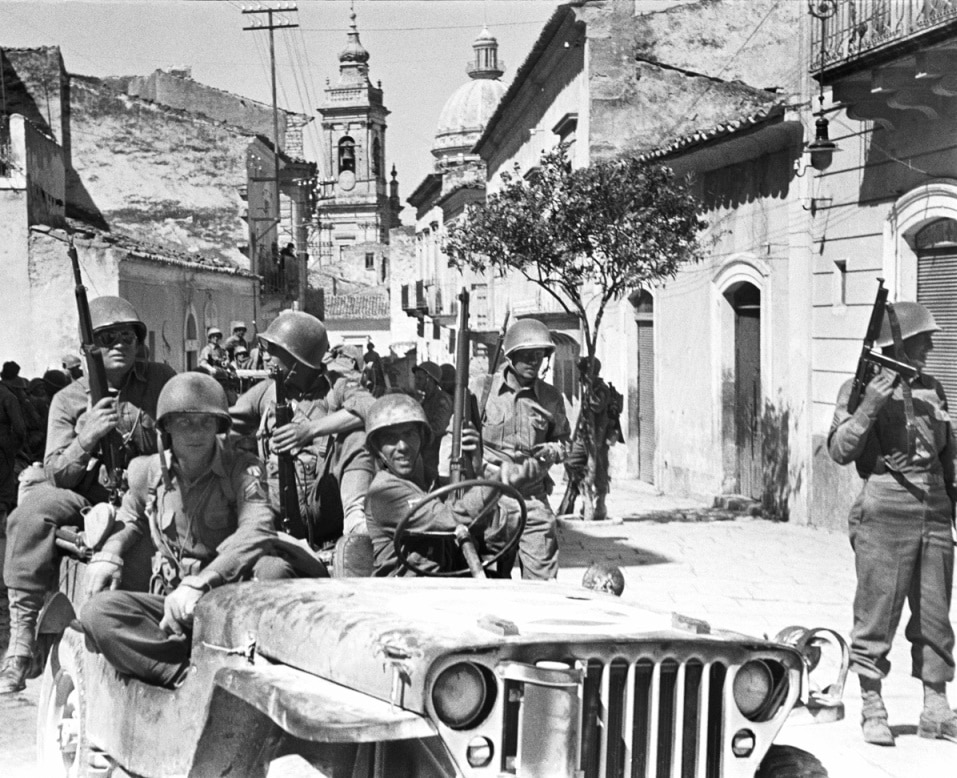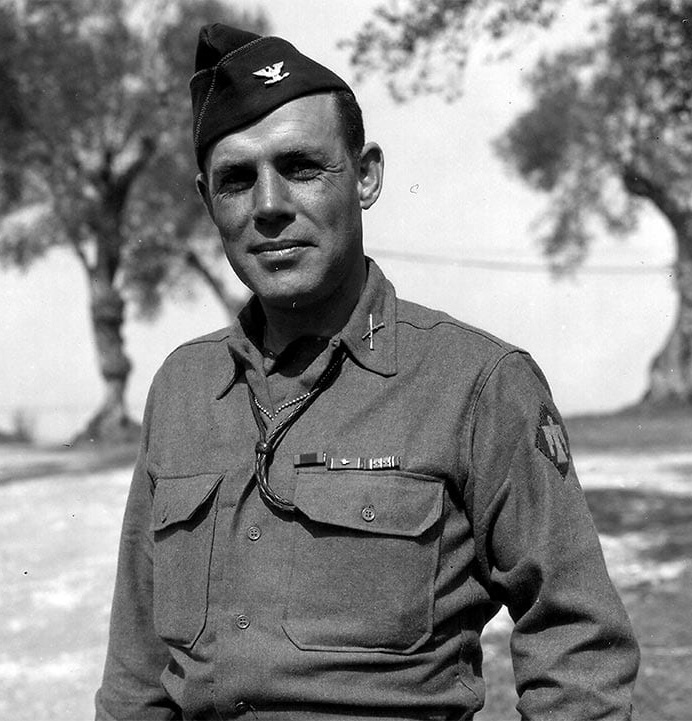#WW2Archives, #MilitaryHistory, #WW2Photographs, #HistoricalDocuments, #WW2Research, #WW2Liberation, #EUCMH, #DocSnafu, #WW2Photos
Document Source: EUCMH own research
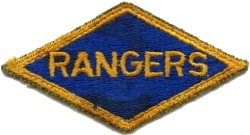
 Gen Lucian K. Truscott, US Army, in liaison with the British General Staff, submitted proposals to Gen George C. Marshall that we undertake immediately an American unit along the lines of the British Commandos in 1942. A subsequent cable from the US War Department authorized the activation of the 1-RB (1st Ranger Battalion). After much deliberation, Able Co, 1-RB Battalion was constituted on May 27, 1942. Capt William O. Darby, a 31-year-old graduate of West Point with amphibious training, was chosen to command the battalion. Within weeks he was promoted to major for his efforts in organizing the unit. Of the 1500 men to volunteer for the original Ranger Battalion, only 600 were chosen. Eighty percent of these original Rangers came from the 34th Infantry Division. On June 19, Able Co, 1-RB, was officially activated in Carrickfergus (Northern Ireland). A selected team of four officers toured the existing commando training camps and selected
Gen Lucian K. Truscott, US Army, in liaison with the British General Staff, submitted proposals to Gen George C. Marshall that we undertake immediately an American unit along the lines of the British Commandos in 1942. A subsequent cable from the US War Department authorized the activation of the 1-RB (1st Ranger Battalion). After much deliberation, Able Co, 1-RB Battalion was constituted on May 27, 1942. Capt William O. Darby, a 31-year-old graduate of West Point with amphibious training, was chosen to command the battalion. Within weeks he was promoted to major for his efforts in organizing the unit. Of the 1500 men to volunteer for the original Ranger Battalion, only 600 were chosen. Eighty percent of these original Rangers came from the 34th Infantry Division. On June 19, Able Co, 1-RB, was officially activated in Carrickfergus (Northern Ireland). A selected team of four officers toured the existing commando training camps and selected  the center at Achnacarry (Scotland) for the Rangers. Here they underwent intensive training. Coached by the battle-seasoned commando instructors (commanded by Col Charles Vaughan), the Rangers learned the basics of commando warfare. Five hundred of the 600 volunteers that Darby brought with him to Achnacarry completed the commando training. Many could not endure the exercises; one Ranger was killed, while several others were wounded in training so realistic that it was executed under live fire.
the center at Achnacarry (Scotland) for the Rangers. Here they underwent intensive training. Coached by the battle-seasoned commando instructors (commanded by Col Charles Vaughan), the Rangers learned the basics of commando warfare. Five hundred of the 600 volunteers that Darby brought with him to Achnacarry completed the commando training. Many could not endure the exercises; one Ranger was killed, while several others were wounded in training so realistic that it was executed under live fire.
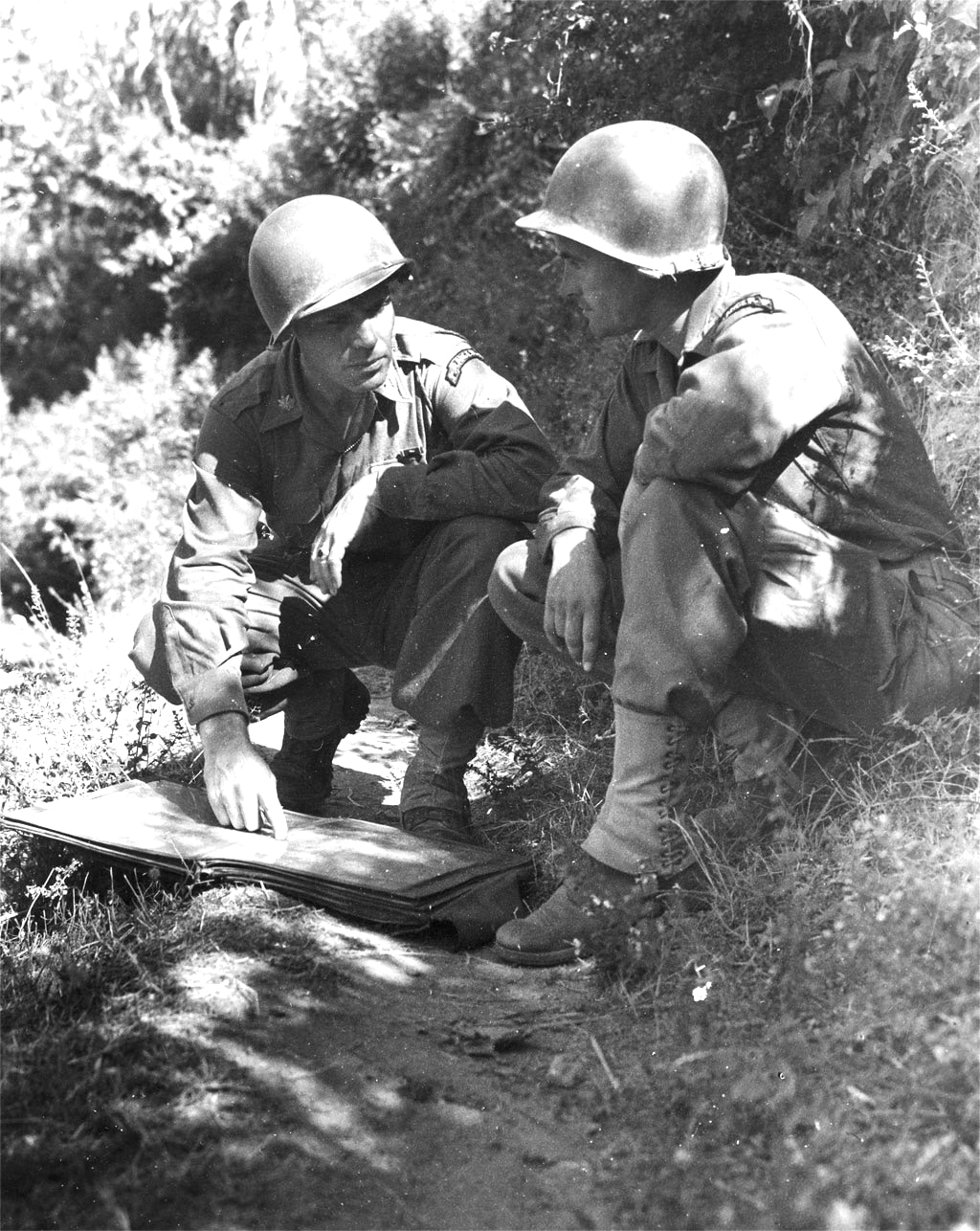 The first American soldiers to see active combat in the European Theater of World War II were forty-four enlisted men and five officers from the 1st Ranger Battalion. Dispersed among the Canadians and the British commandos, these men were the first American ground soldiers to see action against the Germans in the disastrous 1942 Dieppe Raid, officially known as Operation Jubilee. Three Rangers were killed and several others were captured.
The first American soldiers to see active combat in the European Theater of World War II were forty-four enlisted men and five officers from the 1st Ranger Battalion. Dispersed among the Canadians and the British commandos, these men were the first American ground soldiers to see action against the Germans in the disastrous 1942 Dieppe Raid, officially known as Operation Jubilee. Three Rangers were killed and several others were captured.
The first American soldier killed in Europe in World War II was part of the Dieppe Raid, Lt E.V. Loustalot. During the mission, the British Captain leading the assault was killed. Loustalot took command and with his men attacked a clifftop machine gun nest. Scaling the steep cliff, Loustalot was wounded three times and then was killed by enemy crossfire.
The first efforts to stop the German infiltration of Europe were by the 1st Ranger Battalion. Attempting to prevent the German occupation of the seaports in North Africa, the 1-RB spearheaded an invasion at the Port of Arzew in Algeria. This was accomplished by executing a surprise night landing, silencing two gun batteries, and opening the way for the capture of Oran (French Morocco).
 Later, in Tunisia, in 1943, the 1-RB executed the first Ranger behind-the-lines night raid for the purpose of gaining information and terrorizing the enemy. On February 11, the Rangers took a 32-mile (51 KM) journey, 12 on foot, for their first raid on an Italian Camp at Sened Station0. Using the cloak of night, the Rangers slipped in 50 yards (46 M) of the Italian outpost and began their attack. It took the battalion only 20 minutes to achieve area control. Fifty enemies were killed and an additional 10 were captured. Darby, along with fellow commanders, was awarded the Silver Star for this victory and the battalion itself gained the nickname the ‘Black Death’ by the Italians.
Later, in Tunisia, in 1943, the 1-RB executed the first Ranger behind-the-lines night raid for the purpose of gaining information and terrorizing the enemy. On February 11, the Rangers took a 32-mile (51 KM) journey, 12 on foot, for their first raid on an Italian Camp at Sened Station0. Using the cloak of night, the Rangers slipped in 50 yards (46 M) of the Italian outpost and began their attack. It took the battalion only 20 minutes to achieve area control. Fifty enemies were killed and an additional 10 were captured. Darby, along with fellow commanders, was awarded the Silver Star for this victory and the battalion itself gained the nickname the ‘Black Death’ by the Italians.
Later, in March, American units were decimated time and again while trying to break through the critical mountain pass at Djebel Ank. Given this mission, the 1-RB undertook a twelve-mile (19 KM) night march through rugged terrain to reach the heights of Djebel Ank where, at dawn, the Rangers surprised the enemy from the rear, capturing two hundred prisoners and giving Gen George S. Patton an opening through which he began the final and victorious battle in North Africa. Rangers played also a crucial role in the battle of El Guettar which immediately followed, for which the 1-RB won its first Presidential Unit Citation.

 The plan for the invasion of Sicily called for landings on the southeastern corner of the island by two armies. Montgomery’s Eighth Army would land along the east coast from the vicinity of Syracuse south to Cap Passero, while Patton’s 7-A would land along a seventy-mile stretch of coast extending from Licata eastward to the right bank of the Irminio River. American forces were intended to play a secondary role to the British, and Patton’s 7-A’s initial mission was to protect Montgomery’s 8-A’s left while the latter drove northward to Messina, the main objective in Sicily.
The plan for the invasion of Sicily called for landings on the southeastern corner of the island by two armies. Montgomery’s Eighth Army would land along the east coast from the vicinity of Syracuse south to Cap Passero, while Patton’s 7-A would land along a seventy-mile stretch of coast extending from Licata eastward to the right bank of the Irminio River. American forces were intended to play a secondary role to the British, and Patton’s 7-A’s initial mission was to protect Montgomery’s 8-A’s left while the latter drove northward to Messina, the main objective in Sicily.
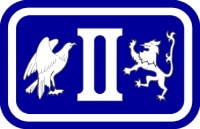
 The Rangers were among the units tasked to spearhead the American landings of the 7-A which was divided into two task forces, which, excluding reserves, were organized around Gen Omar N. Bradley’s II Corps and Gen Lucian K. Truscott‘s 3rd Infantry Division (Reinforced).
The Rangers were among the units tasked to spearhead the American landings of the 7-A which was divided into two task forces, which, excluding reserves, were organized around Gen Omar N. Bradley’s II Corps and Gen Lucian K. Truscott‘s 3rd Infantry Division (Reinforced).
 Darby’s 1 and 4-RBs (Reinforced), which were designated Force X and attached to the II Corps for the invasion, made an opposed landing at Gela on July 10, 1943. Lt Walter Wojcik, who had contributed greatly to the victory at Djebel el Ank Pass, was killed at Gela while crossing the beach. Force X captured the town, defended it successfully against an Axis counter-attack, and took part in the subsequent drive inland under the II Corps and Gen Hugh Gaffey’s 2nd Armored Division. The 3rd Ranger Battalion, which was under Dammer’s command and attached to the 3rd Infantry Division reinforced, made an opposed landing about fifteen miles to the west at Licata and took part in Truscott’s drive inland.
Darby’s 1 and 4-RBs (Reinforced), which were designated Force X and attached to the II Corps for the invasion, made an opposed landing at Gela on July 10, 1943. Lt Walter Wojcik, who had contributed greatly to the victory at Djebel el Ank Pass, was killed at Gela while crossing the beach. Force X captured the town, defended it successfully against an Axis counter-attack, and took part in the subsequent drive inland under the II Corps and Gen Hugh Gaffey’s 2nd Armored Division. The 3rd Ranger Battalion, which was under Dammer’s command and attached to the 3rd Infantry Division reinforced, made an opposed landing about fifteen miles to the west at Licata and took part in Truscott’s drive inland.
As the beachheads expanded, Patton decided to capture the 14000 inhabitants of the city around Port Empedocle in order to gain a port nearer to the advancing front than Licata. He could not, however, openly launch an all-out offensive in the direction of Port Empedocle because of the subordinate role that had been assigned to the Americans. He thus decided to seize the city through the subterfuge of calling his advance a recon in force and limiting participation in it to Truscott’s command.
The Drive on Porto Empedocle
The most direct route from Licata to Port Empedocle lay along the coastal road, Highway 115. Truscott decided against concentrating his attack along the highway because considerable enemy artillery had been reported in the vicinity of Agrigento. Agrigento, a city of 34000, was located on the high ground overlooking Highway 115 and was the most important road center on Sicily South Coast. Port Empedocle was three miles to its southwest.
 According to the 3-ID plans, two battalions of the 7-IR would take Favara while the rest of the regiment advanced along the north side of Highway 115 to high ground east of the Naro River. The 3-RB would then pass through Favara to carry Patton’s recon in force behind Agrigento to Port Empedocfe. The Rangers’ part in the advance would not call for a stealthy penetration of a thickly defended enemy front but would require them to go forward of friendly lines and accomplish their mission in an area where the enemy operated freely. This type of operation would not be unique to the 3-RB, but it would be one of the few the Rangers would conduct in Sicily that would be appropriate to their original purpose and training.
According to the 3-ID plans, two battalions of the 7-IR would take Favara while the rest of the regiment advanced along the north side of Highway 115 to high ground east of the Naro River. The 3-RB would then pass through Favara to carry Patton’s recon in force behind Agrigento to Port Empedocfe. The Rangers’ part in the advance would not call for a stealthy penetration of a thickly defended enemy front but would require them to go forward of friendly lines and accomplish their mission in an area where the enemy operated freely. This type of operation would not be unique to the 3-RB, but it would be one of the few the Rangers would conduct in Sicily that would be appropriate to their original purpose and training.
By daylight, on July 15, the 2/7-IR (3-ID), was in Favara and the regiment was on high ground overlooking the Naro River. Agrigento was the next major objective and would have to be isolated against reinforcement before its capture. The 2/7-IR would take Hill 333, which commanded the northern approaches to the town. The 3-RB, which had become attached to the 7-IR at 1730, would move westward from Favara to Montaperto, which stood on the high ground slightly more than a mile northwest of Agrigento. With Agrigento thus cut off from the north and west, the 1/7-IR, would cross the Naro River from the east and capture the city.
The Rangers passed through friendly front lines at 1900 and advanced by foot along the Favara – Agrigento road (Highway 122). The first leg of the march was relatively uneventful; they were brought under artillery fire three miles beyond Favara and were later taken under machine gun fire, but neither was accurate and the battalion continued forward unscathed. At about midnight, the Rangers ran into their first opposition, an Italian roadblock at Highway 122 and Highway 118 junction. The Americans attacked at 0030 and, after a sharp skirmish, took the position and some emplacements on neighboring high ground by 0130. They also captured 165 Italians, which were too many for the Rangers to take with them, so the prisoners were marched back to Favara and turned over to the 7-IR. There were no Ranger casualties in the action. The battalion slept a few hours on the high ground near the road junction before dawn and resumed its march toward Montaperto at 0600. To advance on the town, the Rangers had to come down from where they had spent the night, cross a mile-wide valley through which Highway 118 passed, and then climb the hill on which Montaperto stood. They were briefly taken under ineffective artillery fire during the advance but were soon rewarded with an opportunity to win another tactical success.
When the Rangers were about 200 yards beyond Highway 118, they sighted an Italian motorized column of ten motorcycles and two troop-laden trucks heading down the road toward them on the way to Agrigento. The Rangers were on the high ground once they had crossed the road, so they organized a hasty ambush where they were and opened fire when the column came abreast. The unsuspecting Italians were taken completely by surprise, many were killed, and forty were captured alive. As at the roadblock the night before, the skirmish was one-sided, and no Rangers were killed or wounded. The battalion continued on its way to Montaperto after the ambush and entered the town at about 0800. From their new hilltop position, the Rangers could look south into a valley that led to Port Empedocle and the sea. While so doing, they saw four Italian artillery batteries. Dammer seized the opportunity and brought the unsuspecting Italians under fire with his 60-MM mortars and automatic weapons. A few of the artillerymen fled south toward the sea, but most put their hands up and docilely climbed the hill to their captors. The Rangers then moved on Port Empedocle via Hill 316, which lay midway between Montaperto and the port. They encountered only weak resistance, took occasional sniper and machine gun fire, and captured the command element of the Italian artillery in the valley. Lt Raymond F. Campbell, the CO of Fox Co, was killed in an assault on a machine gun position during the advance. He was the only Ranger to die in the entire operation and the first man in his battalion to be killed in combat.
Continuing their advance, the Rangers came to an almond grove slightly more than a mile north of Port Empedocle and paused to rest and plan their attack. The ground north of Port Empedocle was broken by a draw that ran out of the city along a north-south axis. The plan Dammer developed called for an attack along both sides of the draw. Dammer would lead three companies in an attack along the east side of the draw, while the remaining three companies attacked along the west side under his executive officer. While Dammer violated the principles of mass and unity of command by dividing his force, a two-pronged attack along two parallel avenues of approach had the advantage of falling on more than one point along with the objective. If the enemy was strong where one prong fell, he might be weak where the second fell, and that weakness could be exploited. The attack began at about 1420, and the premise upon which the plan was based was proven valid. The three companies west of the draw were stopped by determined resistance coming from behind a walled cemetery and by Germans manning coastal defenses and antiaircraft positions, but Dammer’s men continued to make headway.
While one company covered their rear and left flank, the other two companies in Dammer’s element overcame mild resistance and fought their way into the city and to the port area. By 1600, the Rangers had overcome the enemy and had begun to establish a perimeter defense around the city. The 7-IR continued its advance toward Agrigento while the Rangers were operating against Port Empedocle. Resistance was stiff enough to require the infantry to use all three battalions, but the city was in American hands by late afternoon. Patton’s so-called reconnaissance in force thus came to a successful end, right into Messina.
Commentary
Except for the death in combat of one US officer the day which began with the early morning attack on the roadblock and ended with the taking of Port Empedocle, had been little different from an extended training exercise. The march to the final objective had been interrupted by three encounters with the enemy that required Dammer to react, and he and the Rangers had reacted quickly and well. By the end of the day, the 3rd Ranger Battalion had captured 675 Italians and 91 Germans, a number almost double the battalion’s own authorized strength.
The Rangers’ success was largely attributable to the element of surprise. This was certainly true in the attacks on the Italian motorized column and artillery position, Surprise resulted less from the Rangers’ stealth or slight knowledge of the enemy than from enemy weaknesses. The Italians were thinly spread and fragmented, and the gaps in their lines invited infiltration. In addition, the Italians were not fighting well. On the day after the capture of Port Empedocle, the 3-ID’s G-2 noted that the mass surrender of Italians when in combat and their voluntary surrender when not engaged indicated a lack of will to fight. The Rangers would not be so fortunate in their next major operation examined in this paper Cisterna di Littoria.
Subsequent Developments
The Sicilian campaign not only presented the Rangers with little opportunity to conduct the types of operations at which they excelled, but it also resulted in a permanent change in the Rangers’ force structure. This change, which was a response to the Rangers’ recent experience, was the permanent addition of a cannon company to the Rangers Force. Shortly after Darby and Force X had landed at Gela, the Germans and Italians counter-attacked, and Italian tanks briefly penetrated the city. Darby played an active part in the defense. He personally destroyed one Italian tank with a borrowed AT gun and was seen riding on the top of a second tank trying to open its hatch so he could grenade the crew.
The major lesson Darby drew from the Gela counterattack was that the light weapons of the Rangers made them much too vulnerable to enemy armor. He responded as a former artilleryman might, by creating a Ranger cannon company armed with four 75-MM guns mounted on half-tracks. The new company was formed at Corleone at the end of the fighting in Sicily and was ready for use in Italy. As with the attachment of the chemical mortar battalion, however, the Rangers additional firepower made it more likely that they would be used as conventional infantry in the future. One other change that Darby hoped to make did not come about so easily.
On August 10, he wrote to Eisenhower in a second attempt to gain a permanent headquarters for the Rangers. Arguing that the Rangers’ value and effectiveness had been well proven, he asked that a force headquarters be authorized and that the Rangers be assigned to a corps, army, or higher level of command. If, on the other hand, the War Department should decide that the Rangers were not to be a permanent organization, he requested that the three battalions be reformed into a reconnaissance regiment. Patton, who had recently presented Darby with a Distinguished Service Cross for the action at Gela, vigorously endorsed Darby’s request two days later. Furthermore, he valued Darby and the Rangers highly enough to ask that the proposed Ranger regiment be permanently assigned to Seventh Army. Eisenhower did not share Patton’s enthusiasm, however, and disapproved Darby’s request without comment on September 3.




